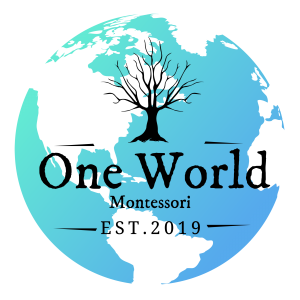Academics
Primary/Kindergarten
Our Primary program is a mixed age classroom where children aged 3-6 learn from and with one another. When visiting our classroom, you will see the older children acting as mentors and leaders for the younger children. The younger children enjoy learning from their peers, and the older children have opportunities to teach their younger friends.
Because students learn best when they are comfortable, the primary classroom has a “home-like” feel to it. The materials are organized beautifully on the shelves and invite children to reach for them. These materials are an essential part of the children’s learning as they give the children concrete representations of abstract concepts. With direction from the teacher and the beauty of the materials, students learn to add, subtract, multiply and divide. They also receive a solid foundation in geometry, geography, botany, and science.
Materials like the sandpaper letters help students with letter formation and the moveable alphabet leads the children to the wonder of reading and writing.
Equally important in the Montessori curriculum are practical life lessons. Practical life activities foster a child’s independence as well as help develop both gross and fine motor skills. The experiences the child has in the primary classroom will prepare him or her for the journey into lower elementary.
Lower Elementary
We believe a lower elementary environment should create a spark for children to think and grow. Recognizing that each child is different, a lower elementary classroom educates the whole child, helping each student succeed at their own pace and level. We are able to deliver individualized education due to smaller classrooms.
Our classroom is comprised of 6-9 year olds who are seeking more intellectual independence as they journey into the second plane of development. Maria Montessori believed that the mixed age classroom provides opportunities for children to learn from and mentor each other. When students are allowed to play such an active role in their own learning, they rely less on a teacher. The children are then free to discover knowledge on their own rather than having it fed to them through lecture.
In all of our elementary programs, the morning is set aside for a three-hour work period. It is during this time that the teacher delivers lessons and students guide their learning through exploration, research, and collaboration. During this work cycle, children will experience geography, arithmetic, geometry, language, history, zoology, botany, and physical science. The experiences the child has in the lower elementary classroom will prepare him or her for the journey into upper elementary.
Upper Elementary
The upper elementary classroom serves students from 4th to 6th grade. These students have an increasing desire to know “why” something happens and “how something works,” and, the upper elementary environment provides students with the materials and resources to find those answers. The interest in the way things work encompasses the scientific and mathematical world as well as the world of social systems and language. It is at these ages that a child’s sense of social justice inflates, allowing them develop solutions to complicated problems.
A typical upper elementary student will spend his or her work period completing both individual and group projects. He or she will participate in hands on activities and problem based learning that allow them to develop independent and critical thinking.
Like all Montessori classrooms, practical life is important to upper elementary. However, whereas a primary student practical life might be pouring and sorting, an upper elementary student learns skills, such as goal-setting, time management, and planning.
Middle School
The middle school classroom serves students from 7th to 8th grade. The middle school classroom is the transitional period from strictly Montessori methods to a combination of Montessori and project based learning. During middle school, students will start to receive grades based on rubrics they use to complete projects in Math, Science, History, English, and Experiential Learning.
We will also offer middle school students the opportunity to take classes with the North Carolina Virtual Public High School (NCVPS). Not only will these classes increase the child’s knowledge, the student will also receive high school credit if he or she successfully completes the class. Students will be provided time at school to work on NCVPS courses.
High School
The high school classroom serves students from 9th to 12th grade. High school students are taught using project based learning. All students can dual enroll with Coastal Community College starting in the 11th grade. Some students can even start as early as the 10th grade. The goal of our high school program is to prepare students to be successful once apply to college or enter into the workforce.
Also, we offer high school students the opportunity to take classes with the North Carolina Virtual Public High School (NCVPS). Not only will these classes increase the child’s knowledge, the student will also receive high school credit if he or she successfully completes the class. Students will be provided time at school to work on NCVPS courses.
